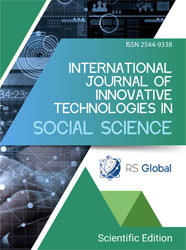EXERCISE-INDUCED ANAPHYLAXIS: CURRENT INSIGHTS FROM THE LITERATURE
Abstract
Background: Exercise-induced anaphylaxis (EIA) is an uncommon but potentially life-threatening disorder triggered by physical activity. Its food-dependent form (FDEIA), most frequently associated with wheat and ω-5 gliadin, is the most prevalent subtype. Despite increasing recognition, both EIA and FDEIA remain underdiagnosed due to their heterogeneous presentations and multifactorial pathogenesis.
Methods: A narrative literature review was conducted, focusing on publications from 2023–2025 retrieved through PubMed, Scopus, and Google Scholar. Emphasis was placed on recent clinical trials, case reports, and mechanistic studies addressing epidemiology, diagnosis, and management.
Results: Recent evidence highlights the interplay between allergens, exercise, and cofactors such as nonsteroidal anti-inflammatory drugs, alcohol, and infections in lowering the threshold for reactions. While wheat and ω-5 gliadin remain the dominant triggers in FDEIA, newly described allergens, including banana, shellfish, and soy, broaden the clinical spectrum. Advances in molecular allergology, particularly component-resolved diagnostics, enhance sensitivity in identifying culprit allergens, although accessibility remains limited. Management continues to rely on trigger avoidance and the availability of self-injectable epinephrine. Promising developments include hypoallergenic wheat formulations, biologics such as omalizumab, and experimental approaches targeting mast cell signaling, notably Bruton’s tyrosine kinase inhibitors.
Conclusion: EIA and FDEIA are clinically significant disorders with diverse presentations and considerable diagnostic challenges. Progress in molecular diagnostics and biologic therapies suggests a shift toward proactive, disease-modifying strategies. Future priorities include standardized diagnostic protocols, validation of emerging therapies, and enhanced clinical awareness to improve patient safety and quality of life.
References
Ansley, L., Bonini, M., Delgado, L., Del Giacco, S., Du Toit, G., Khaitov, M., Kurowski, M., Hull, J. H., Moreira, A., & Robson-Ansley, P. J. (2015). Pathophysiological mechanisms of exercise-induced anaphylaxis: an EAACI position statement. Allergy, 70(10), 1212-1221. https://doi.org/10.1111/all.12677
Asaumi, T., Yanagida, N., Sato, S., Shukuya, A., Nishino, M., & Ebisawa, M. (2016). Provocation tests for the diagnosis of food-dependent exercise-induced anaphylaxis. Pediatr Allergy Immunol, 27(1), 44-49. https://doi.org/10.1111/pai.12489
Benito-Garcia, F., Ansotegui, I. J., & Morais-Almeida, M. (2019). Diagnosis and prevention of food-dependent exercise-induced anaphylaxis. Expert Rev Clin Immunol, 15(8), 849-856. https://doi.org/10.1080/1744666x.2019.1642747
Bennett, J. R. (2015). Anaphylaxis attributed to exercise: considerations for sports medicine specialists. Phys Sportsmed, 43(1), 1-12. https://doi.org/10.1080/00913847.2015.1000233
Callisto, A., Perkins, G. B., Troelnikov, A., Mhatre, S., Hissaria, P., & Smith, W. (2024). Prevention of exercise-induced anaphylaxis by ibrutinib. J Allergy Clin Immunol Pract, 12(9), 2503-2505.e2502. https://doi.org/10.1016/j.jaip.2024.05.036
Carlisle, A., & Lieberman, J. A. (2024). Getting in Shape: Updates in Exercise Anaphylaxis. Curr Allergy Asthma Rep, 24(11), 631-638. https://doi.org/10.1007/s11882-024-01176-4
Kampitak, T. (2023). Preprandial food-dependent exercise-induced anaphylaxis to banana. Asia Pac Allergy, 13(4), 199-200. https://doi.org/10.5415/apallergy.0000000000000113
Kohno, K., Chinuki, Y., Sugiyama, A., Kishikawa, R., Okamoto, M., Hide, M., Oda, Y., Fukunaga, A., Suzuki, R., & Morita, E. (2025). Phase II multicenter clinical trial of hypoallergenic 1BS-18 Hokushin bread oral immunotherapy for wheat-dependent exercise-induced anaphylaxis. Asia Pac Allergy, 15(2), 67-73. https://doi.org/10.5415/apallergy.0000000000000180
Landgraf, S. (2025). Allergic to Exercise: A Case of Exercise-Induced Anaphylaxis. Curr Sports Med Rep, 24(4), 83-84. https://doi.org/10.1249/jsr.0000000000001239
Le Bon Chami, B., Charif, F., El Zoghbi, S., Challita, S., & Zaitoun, F. (2025). Omega-5-Gliadin Allergy and Cofactors Leading to Anaphylaxis: A Case Report. Cureus, 17(3), e81529. https://doi.org/10.7759/cureus.81529
Miyamoto, M., Maruyama, N., & Yoshihara, S. (2025). Component-resolved diagnostics in pediatric wheat-dependent exercise-induced anaphylaxis: A case report. Allergol Immunopathol (Madr), 53(4), 138-140. https://doi.org/10.15586/aei.v53i4.1316
Mobayed, H., Al-Nesf, M. A., Robles-Velasco, K., Cherrez-Ojeda, I., Ensina, L. F., & Maurer, M. (2023). Severe exercise-induced anaphylaxis in a hot and humid area successfully treated with omalizumab: a case report. Front Allergy, 4, 1228495. https://doi.org/10.3389/falgy.2023.1228495
Özdemir, Ö. (2025). Banana-dependent exercise-induced anaphylaxis. Asia Pacific Allergy, 15(1), 42. https://doi.org/10.5415/apallergy.0000000000000168
Park, J. S., Yoo, Y., & Kwon, J. W. (2025). Multiple Allergen Simultaneous Test for Food Allergens Cannot Screen Wheat-Dependent, Exercise-Induced Anaphylaxis and α-Gal Syndrome. Yonsei Med J, 66(1), 58-62. https://doi.org/10.3349/ymj.2024.0031
Patel, R. R., Biswas, R., Walia-Kals, J., Hsieh, B., & Weinstein, M. (2025). Food-Dependent Exercise-Induced Anaphylaxis on a Nontraditional Timeline. Cureus, 17(6), e86854. https://doi.org/10.7759/cureus.86854
Piboonpocanun, S., Krikeerati, T., Lumkul, L., Chiang, V., Kan, A. K. C., Phinyo, P., Wongsa, C., Thongngarm, T., Li, P. H., & Sompornrattanaphan, M. (2025). Evaluation of a Novel In-House Gliadin Skin Test Reagent for Diagnosing Wheat-Dependent Exercise-Induced Anaphylaxis (WDEIA). Clin Exp Allergy. https://doi.org/10.1111/cea.70053
Povesi Dascola, C., & Caffarelli, C. (2012). Exercise-induced anaphylaxis: A clinical view. Ital J Pediatr, 38, 43. https://doi.org/10.1186/1824-7288-38-43
Sayaca, N. (2023). Exercise-Induced Anaphylaxis. In D. Kaya Utlu (Ed.), Functional Exercise Anatomy and Physiology for Physiotherapists (pp. 561-572). Springer International Publishing. https://doi.org/10.1007/978-3-031-27184-7_29
Srisuwatchari, W., Kanchanapoomi, K., & Pacharn, P. (2025). Molecular Diagnosis to IgE-mediated Wheat Allergy and Wheat-Dependent Exercise-Induced Anaphylaxis. Clin Rev Allergy Immunol, 68(1), 47. https://doi.org/10.1007/s12016-025-09059-w
Tang, T., Zhang, J., Wu, J., & Zhang, Y. (2025). Deciphering the challenge: rhabdomyolysis diagnosis in food-dependent exercise-induced anaphylaxis. Oxf Med Case Reports, 2025(3), omae200. https://doi.org/10.1093/omcr/omae200
Veramendi-Espinoza, L., Galván, C., & Durán, R. (2025). [Wheat-dependent exercise-induced anaphylaxis: The diagnostic utility of Omega-5 Gliadin in two clinical cases from Lima, Peru]. Rev Alerg Mex, 72(2), 76-79. https://doi.org/10.29262/ram.v72i2.1455 (Anafilaxia inducida por el ejercicio dependiente del trigo: utilidad de la Gliadina Omega-5 en dos casos clínicos de Lima, Perú.)
Zogaj, D., Ibranji, A., & Hoxha, M. (2014). Exercise-induced Anaphylaxis: the Role of Cofactors. Mater Sociomed, 26(6), 401-404. https://doi.org/10.5455/msm.2014.26.401-404
Views:
73
Downloads:
32
Copyright (c) 2025 Julia Borkowska, Julia Skowrońska-Borsuk, Martyna Narożniak, Adrianna Ewa Pękacka, Bartłomiej Czerwiec, Adam Borsuk, Joanna Katarzyna Pergoł, Malwina Wojtas, Zuzanna Krupa, Julia Sposób

This work is licensed under a Creative Commons Attribution 4.0 International License.
All articles are published in open-access and licensed under a Creative Commons Attribution 4.0 International License (CC BY 4.0). Hence, authors retain copyright to the content of the articles.
CC BY 4.0 License allows content to be copied, adapted, displayed, distributed, re-published or otherwise re-used for any purpose including for adaptation and commercial use provided the content is attributed.











